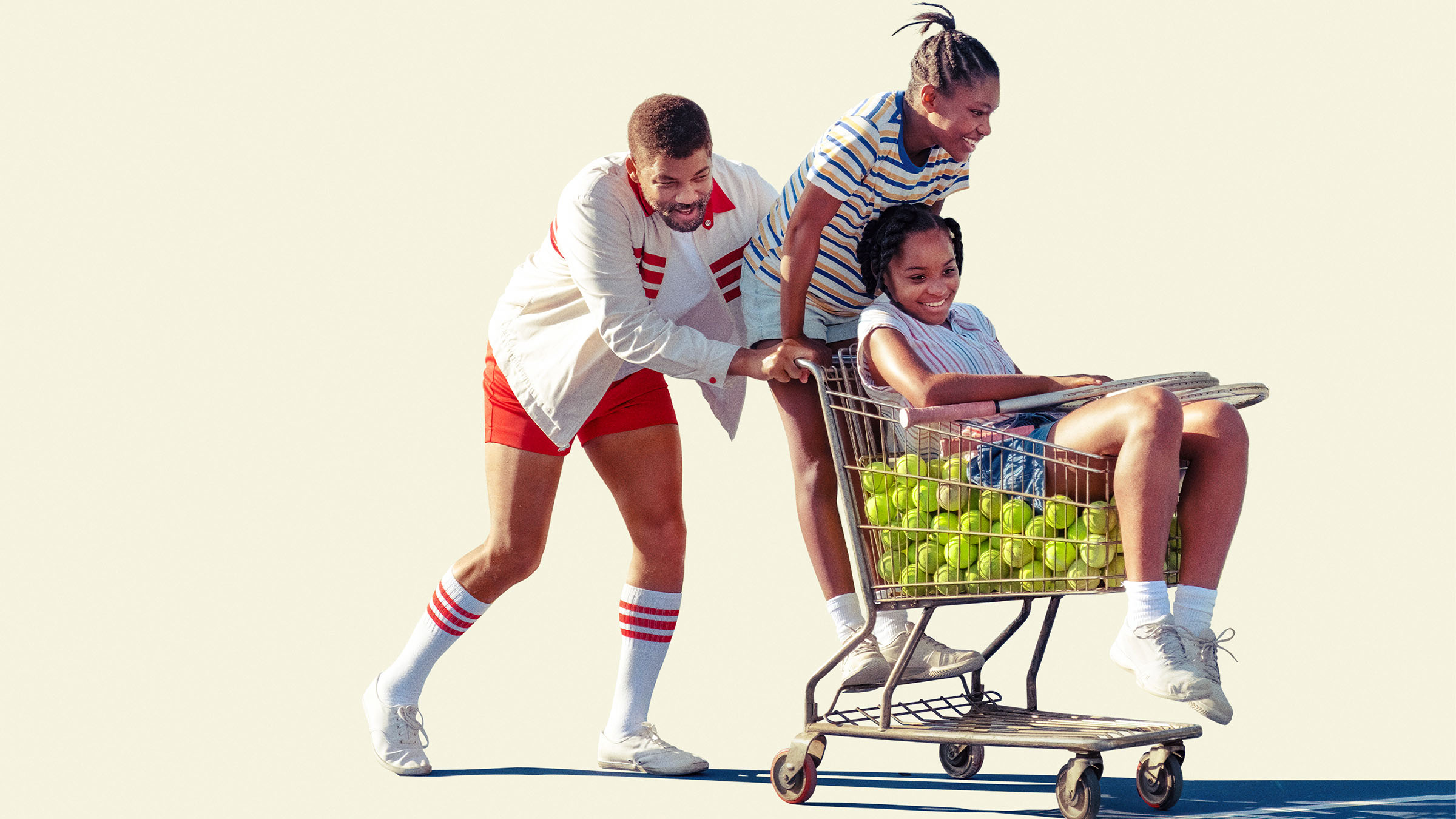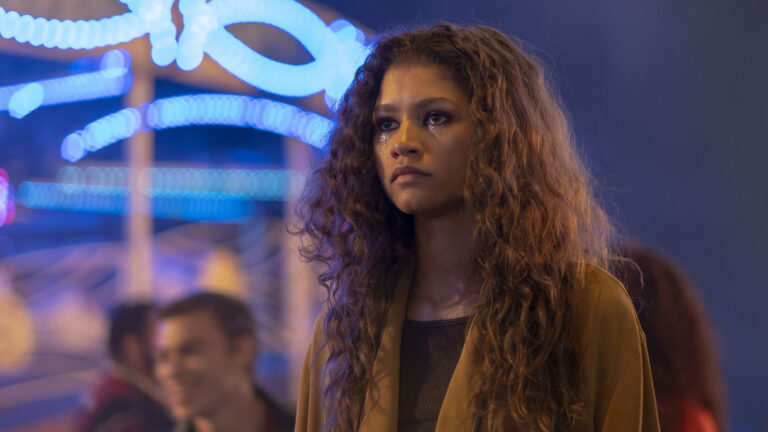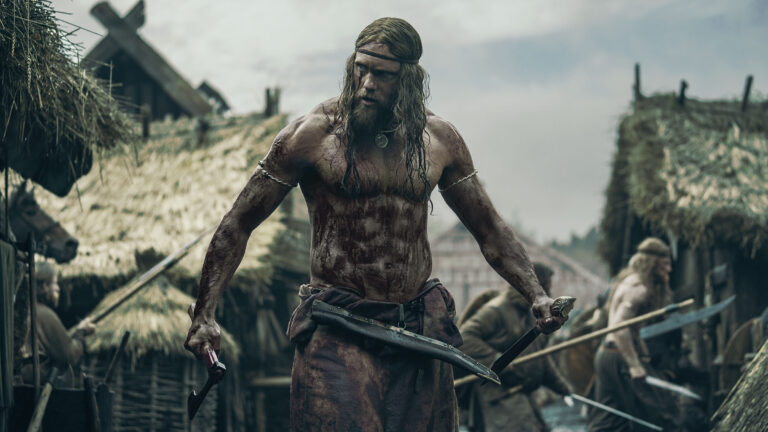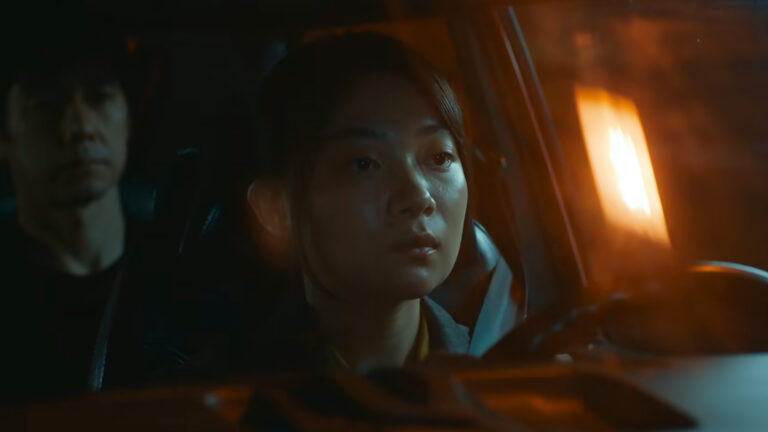Today we’re speaking with Oscar nominee Pamela Martin ACE, the editor of the film King Richard, starring Will Smith as the father of tennis greats Venus and Serena Williams.
Ms. Martin was nominated for an ACE Eddie for Little Miss Sunshine and was nominated for another ACE Eddie and an Oscar for The Fighter. Her other films include Downhill, Battle of the Sexes, and Free State of Jones. She’s also cut some TV, including the pilot for Weeds.
Listen while you read…
HULLFISH: I noticed that you’ve done a bunch of sports movies; obviously, you were nominated for an Oscar for The Fighter, and then you’ve also cut Battle of the Sexes—another tennis movie. Are you getting pigeonholed into all the tennis movies?
MARTIN: My doing the tennis movies had nothing to do with The Fighter. But I must say, after The Fighter, every single boxing movie crosses my desk. I also got a lot more macho fare because before that I was doing almost all dark comedies. And once I did The Fighter, I got called for drama, and anything with fighting in it, whether it was boxing, or cops, or gunfights. Battle of the Sexes came about because I’d done Jonathan Dayton and Valerie Faris’ other two films. [Little Miss Sunshine and Ruby Sparks]
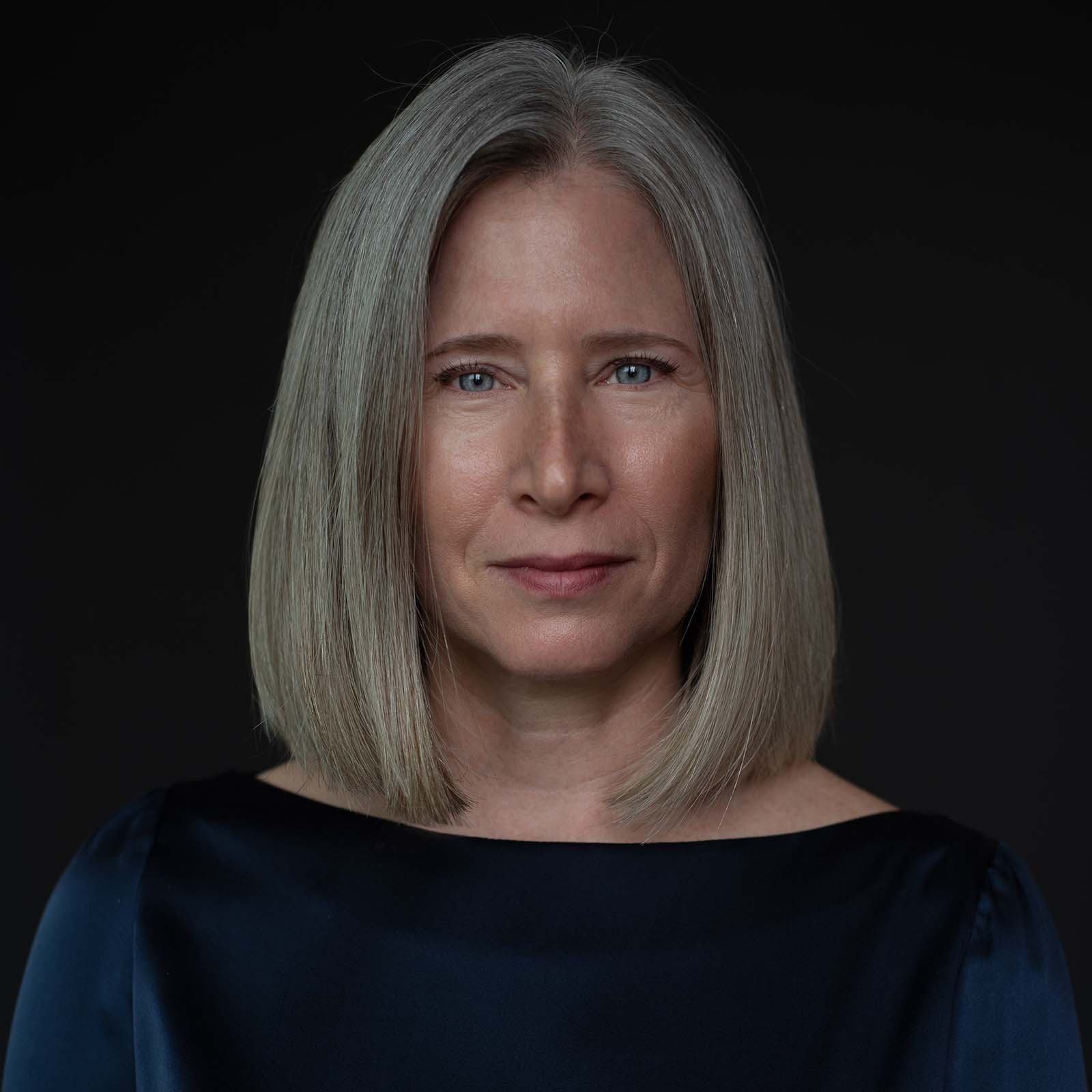
I then landed on this one and Reinaldo (director Reinaldo Marcus Green) told me that the reason he called me was that two of his references for King Richard were Little Miss Sunshine and The Fighter. I look at the three of these sports movies as not sports movies, they’re dramas with sports in them, and a lot of people are very interested in the sports part of it because it’s hard to do, but I look at them as family dramas or character dramas.
HULLFISH: You wouldn’t call Little Miss Sunshine a pageant movie.
MARTIN: No, no, but trust me, I’ve gotten a lot of pageant scripts, and it’s hard to want to gear up and do that sort of thing again. Anytime you do a film that you love, or just you’ve done a film, it’s a long journey. You don’t really want to jump back in with similar material again. I was hesitant to do this one because of the tennis, but we did the tennis in a completely different way than Battle of the Sexes, so that made it very interesting to me, and honestly, I took the job because I really like Reinaldo. I’d met him years before, and I thought the script was great. I love the story.
HULLFISH: You probably get a little bit more chance to be picky when choosing projects. What are some of your criteria other than not picking something too similar to the last one?
MARTIN: It all comes down to the script. The script is the primary thing. It’s interesting to think about why I picked scripts well. I think it’s because I pick scripts of movies that I want to see with some exceptions. Sometimes you do a job for money. Sometimes you do a job because you have a long relationship with a particular director, and they ask you to do it, but for the most part, I think it’s a level of taste.
I just pick what I want to see because I’m the one that has to sit there sometimes for nine or fifteen months, and I better really love what I’m doing, or it can be pretty torturous. Of course, the director factors into it as well; their level of experience is often an indicator of whether or not I want to get involved in the project.
I look at myself as sort of the mother of the movie, and I have to mother too much; I already have my own kids at home, so I really have to like their prior work, and this is only Reinaldo’s third feature, but I love Monsters and Men which was his first film, and I had the opportunity to see that before I got on board with this one and also you just have to see if you’re going to click with the director because you spend a lot of time together.
HULLFISH: With Covid and everything, are you even doing in-person meetings anymore?
MARTIN: Yeah, I met Reinaldo about five years ago at the Sundance filmmakers lab when he was workshopping Monsters and Men. I was just there for a week as was Robert Elswit, the director of photography on this movie, and he came to me about five months before the film was up and running and ready to go and said he would love to talk to me about his film, so he sent me the script, and we got together over breakfast and talked about it.
I asked him a lot of questions about how he was planning on doing the tennis because I knew what the pitfalls were, having done it before, and I wanted to see what his plan was for it. We talked about the characters, and in a typical meeting, I might point out things in the script that could be better or maybe that are unnecessary before they shoot. Then we left it alone, and months passed, and he came back to me again and said, “It’s happening are you in?”
And between the time that I first met him and that call, I had the opportunity to read a lot of other scripts that were coming in looking for editors. King Richard was by far the best script I had read, so I decided that it would be foolish not to take it. It really spoke to me on many levels, so I said “Yes.”
From there, we talked more about the script, and there were previz shoots for the tennis to help determine what angles would work best with the style that he wanted to use, which was very helpful. By the time they went and shot the tennis, we had already determined what types of angles worked and what kind of coverage did not work. So that was helpful prior to the shooting, the principal photography.
HULLFISH: One of the questions that I ask a lot of editors is when you are looking at a blank timeline or when you are looking at a fresh bin of dailies, what do you do?
MARTIN: When I get the dailies, I sit down, and I watch everything, and I take handwritten notes. Parts that I like, takes that don’t work, just little notes. I have a huge thick notebook full of handwritten notes for every movie, every single take, and angle.
If they’re shooting multiple cameras and it’s not handheld, I am able to watch multiple cameras at the same time and take notes on those performances, and by doing that process, I familiarize myself with all the angles, and sometimes I have a very clear idea of if I love a specific shot for the beginning of this scene, or I must use this piece in the middle of this scene.
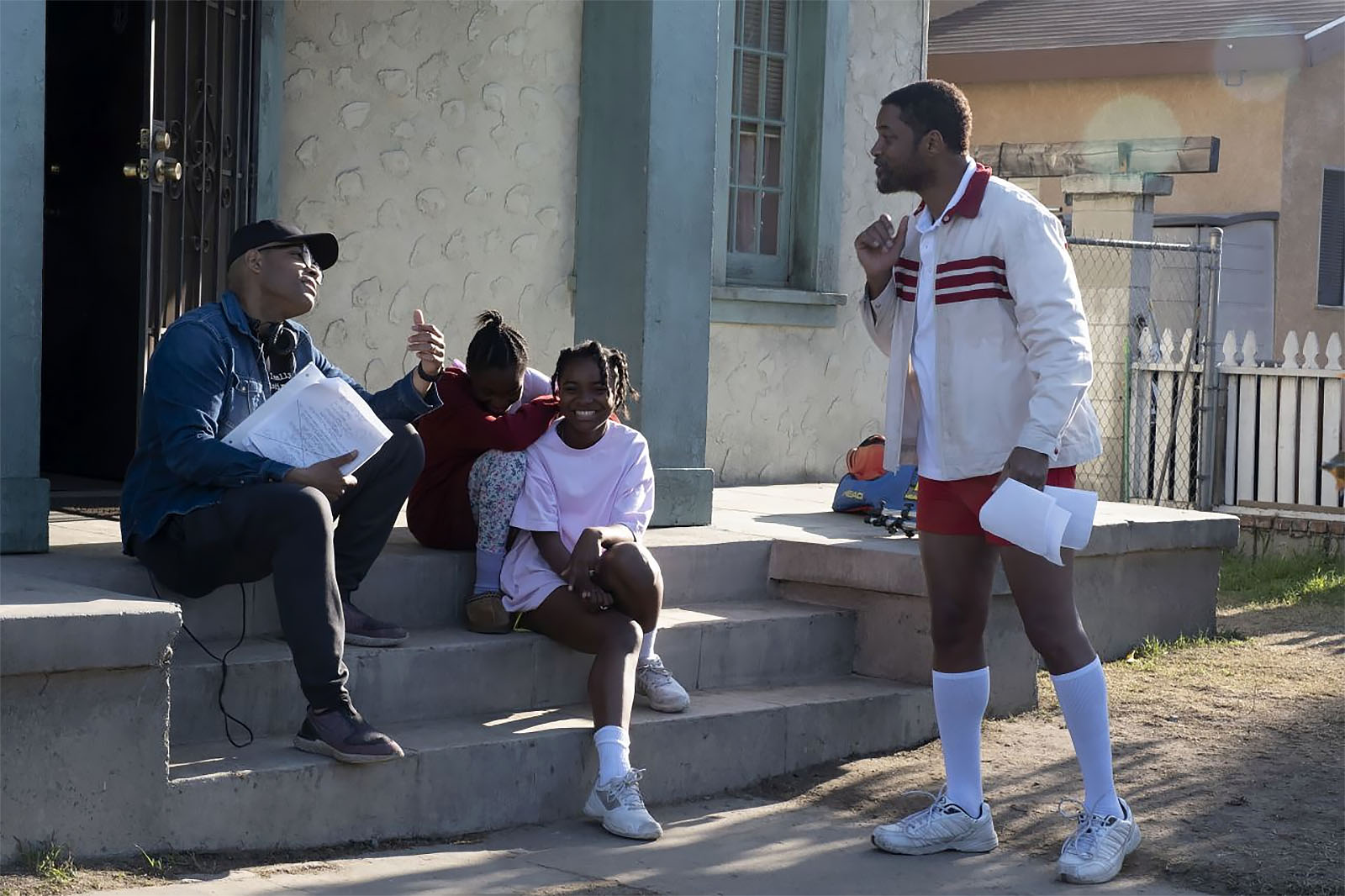
Mostly when I start to cut, I don’t do any string-outs. I hate them. I’ve never, ever done them, and I find it very counterintuitive to my process. I go right into what I call a rough cut, not an assembly, but a rough cut, and I don’t overthink where I’m beginning the scene, or where I start the scene.
Sometimes it’s very obvious because I see a really beautiful shot that would work well as a transition, and obviously, you’re cutting the film out of order, so you often don’t have the scene that came before or that comes after, but I just pick a spot because I know it could change, It’s probably going to change, and it doesn’t really matter, but I go on a ride with the scene which is how I would describe it.

Whatever angle I decided to start with, I look through my notes to find my favorite one, and so I start there, and I don’t cut until my eyes want to see the next thing.
So if I’m cutting a conversation and I really want to see that person’s reaction, that’s when I’ll cut, and I will then look through my notes and shape the scene as I go. I also used to be a dialogue editor back in my early days, and I do a lot of smoothing out as I’m cutting the initial scene because I know that if it bumps, the cut will bump, and it will bump the director on first viewing. So I do a lot of dialogue work as I go, smoothing everything out, and if that means I’m pre-lapping or post-lapping, that’s what I do.
I even do line replacements when necessary if I’m having difficulty matching mics or matching performances. So when I finish the first pass, I have something that’s semi-polished, and it’s also pretty quick because I’m trying to keep up with the camera, so I’m speed editing, and I often will cut multiple versions because I might see another approach to it and want to try that as well and give the director maybe two or three choices.
I always tell my young editor friends what I do to make sure the director feels connected to the edit during production. It’s something that took many years to figure out. Every day I’ll send an email to the director, and I’ll go in sequential order, and I’ll say, “Scene three – I roughed the scene together today; it’s working really well, especially the comedy when they do X Y or Z” I might say “I had a little trouble with this one performance, they seem a little stiff,” or “It wasn’t quite what I expected.”
Some directors also want to talk to me every evening and download their day, saying, “I did all these scenes, and I just want you to know that my favorite take was this in general.” I don’t pay that much attention to the circle takes because I find that the perception of how things play on set is often quite different than how they play on the screen. That’s why I watch everything and take notes on everything and cut it to my specifications and liking.
HULLFISH: You mentioned that you keep notebooks of these notes that you have, but are you also using markers? Why write stuff down instead of just using markers?
MARTIN: My system for my markers is very specific. I use the markers to notate usable pieces of each take and what garbage stuff is in between. I use markers also to indicate pick-ups within a take. The only time we fully markup takes with markers because it gets very busy visually for me is when there are ad-lib lines.
I have my assistants put every single line into the markers for the Avid so that I basically can open up a page of them to my left, and it’s a script of what was said. I can usually find things that way, and the handwritten notes do have timecodes as well, and I can just punch that in if needed. I just like to keep it very clean because I want to be able to see where the starts and stops are and where the pick-ups are; it’s separating the visuals of that.
HULLFISH: Do you ever refer back to the notes? A lot of times, I think people take notes as a way of memorizing something instead of as a way of looking back at something.
MARTIN: Yes, it definitely helps for memorizing. It helps on the very first cut, I go back to them on occasion, but I don’t heavily rely on them. If I have documentary-style footage, I use it a lot more, and I also have a system where I star things, one star, two stars, three stars, etc, and that’s all in my handwritten notes. Sometimes the handwritten notes are helpful to find a particular angle because I cut in frame view, and sometimes the frame view is flipped, or there are three or four angles, and sometimes it’s hard to see which one was which angle, so I’ll go back to my notes and find that.
HULLFISH: When you work with a new director, like Reinaldo, how do you make him comfortable with your decisions? How do you start that relationship?
MARTIN: I think when I started with Reinaldo there obviously was a level of comfort to begin with because I had already spent some time with him at the Sundance lab, but I also think because of my level of experience compared to his, there’s also a level of comfort. He knows he’s hiring somebody who knows what they are doing, hopefully [laughs].
But like I said, those notes that I send every day and the cuts that I send increase their confidence because I am the cheerleader that’s seeing everything. They’re not seeing everything; they’re too busy shooting the movie. The producers haven’t even seen everything; they’re too busy managing the movie.
I hope they look to the edit room and say, ‘She’s got this, and she’s helping me because she’s giving me good critiques and also letting me know what’s really working.’
I’m the one person who’s hands-on with what he’s producing every day, so the more conversation I can have with him and the more I can show him will help him feel like they’re in good hands. I hope they look to the edit room and say, “She’s got this, and she’s helping me because she’s giving me good critiques and also letting me know what’s really working.” I do that either on the phone or in my emails or both, and I think they can see that in the cut material.
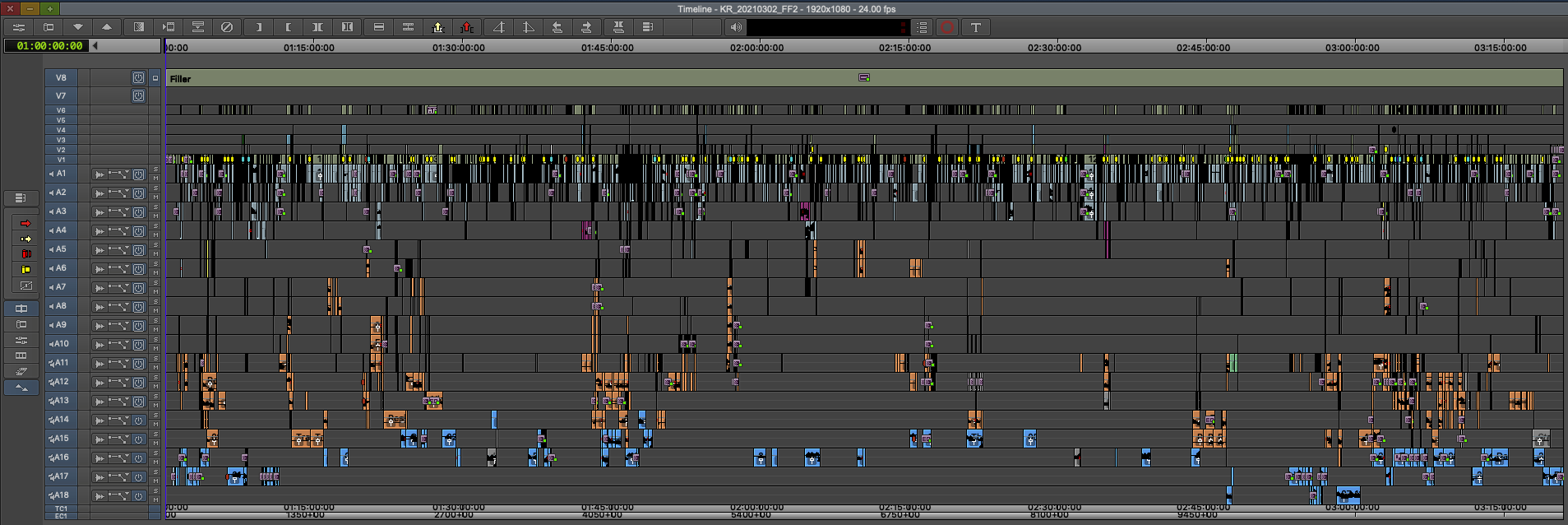
I was on one job where the producer called me at one point and said, “Oh my God, the director waits for those emails every evening. It’s just like the highlight of their day.” I feel you get a rapport going, and I used to not do that. I’ve had directors question my level of engagement before. I got the sense that I wasn’t giving them quite enough, and that’s what prompted me to step it up and be very proactive, and I think it really helped in so many ways with the relationship and with how they feel on set about what they’re doing and that they feel more confident about what I’m doing.
HULLFISH: It’s interesting that we live in a kind of a different era now when we’re cutting on film or even before emails and texts, right? The only way that you could do that stuff was to get in the director’s face.
MARTIN: When I was cutting on film, the PA would pick me up at the edit room; whatever time they wrapped, it could be 11 o’clock at night and drive me to location an hour away to sit in a trailer to screen dailies, and it was exhausting, yes. They have you in the room, you’re sitting next to them, they’re saying, “I like this. I like that,” and you’re taking their notes.
But honestly, for me, it was such a waste of time because I watched everything every single day and it just expanded my day by hours sometimes, and I couldn’t fully take my notes the right way because I had to have my ear open for the director sitting next to me to take their notes. I didn’t have the ability to show them cuts unless they came in. They were more in the dark, as were you, because until they looked at the cut, you didn’t know if you were on the right track.
I had an experience very early in my career where I traveled a long way to get to set to show two weeks worth of work, and the funny part of the story is that I looked at the takes, and it wasn’t clear to me from the script notes what the director liked or didn’t like.
I saw progression in the takes, it was a comic drama, and I noticed that as the takes went on, usually the last couple of takes, the comedy got a lot more broad, and then they would stop filming. Without a conversation with the director, one might surmise that this is what they were going for, and they finally got it in the last one or two takes.
So I cut the scenes more broad and went all the way to Canada and sat down with the director, and he was horrified. He actually gave those takes to the actor. The actor really wanted to do that and so he [the director] would just get what he needed and then say, “Okay, go do your thing.” And it was a very experienced actor, but I didn’t know this, he didn’t tell me this!
If you don’t communicate well, you could totally go down the wrong path.
I just guessed based on my experience, which was more limited at that time, the producer, who I’m still friends with today, said, “He wanted to fire you after that weekend!” [laughs] But I went back and very quickly recut everything and sent it to him in the mail after that. It just goes to show you that if you don’t communicate well, you could totally go down the wrong path.
HULLFISH: And it would’ve been worse if you hadn’t gone up there after two weeks because then you would have done six months of work the wrong way.
MARTIN: Yeah. I wish that the script supervisor or the director had told me that. Just a little “Hey, just so you know!” [laughs]
HULLFISH: That brings up an interesting point. How close of a relationship do you try to develop with the script supervisor?
MARTIN: That’s a tough question; I mostly talk to the script supervisor about what is needed that we didn’t end up getting. You’re trying to figure out where a new scene could go, but in those cases, you’re mostly talking to the writer or the director.
I don’t communicate a lot with them because if you have a good script supervisor, the notes are quite excellent. They communicate more with me to make sure they’re giving me what I need. More of the conversations are about pick-up shots, and there are also times where the producers come to you and say, “We don’t have time for all this. What do you really need?
HULLFISH: Tell me about your sense of stewardship of this story because it’s a true-life story. Did you feel a special responsibility?
MARTIN: Absolutely. I think any time you tell a story about real people, you have a responsibility to be as truthful as possible. On this film, we had Isha Price, who is one of the older sisters in the Williams family, as an executive producer, and she was on set every day. She also watched the cuts that we showed the producers and gave notes. She was very important because sometimes she would say, “Oh, that would never happen.” Or “They wouldn’t speak like that to each other.”
I love stories about real people because these stories to me seem more incredible than fiction a lot of the time.
HULLFISH: Talk to me about how you and Reinaldo dialed into the POV of Richard. How did that affect the editing or the story decisions that you were focused on his perspective and not the girls’?
MARTIN: King Richard is the origin story for Venus and Serena, and at one point in the movie, the torch is passed to Venus. We had an issue in the first scripted version that was cut, and we knew we had all these great pieces, but the order of it wasn’t quite right.
We kept changing the opening, and the opening was never feeling fully fleshed out. We kept being told we would find it in the edit, or we would go and get pick-up shots. So the movie that you see, the first act, has a lot of scenes that have been reordered, and we even tried removing things and just starting on the streets of Compton.
Tragniew Park tennis courts, where Richard Williams would take his daughters to train.
Everything we tried wasn’t quite working, and then Reinaldo and I had the idea to move this Coach Shopping scene and combine it with the collecting tennis balls scene, and it immediately puts the film in his voice. From his point of view, you see him getting rejected over and over. When we saw the effect of those scenes upfront, how tired he looks at that job, it was so much more impactful, and then he still opens the tennis magazine and tries to find another coach.
He does not give up, and it really helped launch the movie from Richard’s point of view from the very opening, and that was created in the editing process.
The point of view was crafted very deliberately throughout the film. There’s a very simple scene early on when Richard’s taking the girls to the tennis court for the first time, and that gangster beats him up a little bit.
When we get back in the van with them, I hold on to the girls looking scared, totally silent, completely the opposite of what it was like on the drive to the court. Then one sister pipes in and says, “Daddy, are you okay?” and we just hold on Richard giving his little talk about, “Ain’t nobody ever had no respect for Richard Williams, but they’re going to respect you.” I didn’t cut at the moment; we are experiencing Richard and why he feels the way he does. We are seeing what he’s trying to help the girls with, in life. You really experienced his headspace, where he is, what he’s thinking.
HULLFISH: Interesting that so much of the beginning was restructured. I think of it as a linear story, but you’re right; the beginning is not linear. Was the end of the movie as scripted?
MARTIN: There was another scene between Richard and Rick Macci in the hallway where Rick is begging Richard to take the deal. It was another one of those scenes, and it was beautiful because Rick said to Richard. “I know I don’t say this to you often enough, but you are a great father.”
It was a little more of an exchange where Richard got a little angry at him, but Rick says, “Look, you are a great father, but you need to do this.” The final act just couldn’t hold the weight of all of this, and it was a scene we loved, but we had one too many scenes with that beat.
One interesting thing that came about during production was the scene with Richard and Serena, looking out at the large court where he says, “I have a plan for you.” That scene was not scripted for that location. There was another scene where the family left for the airport, and in the script, Serena was not coming downstairs, so dad went up to the bedroom to have a talk with her.
The day they shot it, they were super rushed, and they did not have time to stage that bedroom, so they shot a scene in the stairwell. Unfortunately, it was a very tight space, so we only had these odd angles. It just visually didn’t work, and because it was so rushed, the performances didn’t really work either.
It’s funny because when I get a little bit behind in the dailies, I often give scenes to my assistants who want to cut it. I look at the coverage, and I give them a simple scene, and I gave that particular scene to one of them. Well, the assistant editor was taking a long time with it, and finally, I got to the point where I needed to see it because I had to give it to the director. So I looked at it and thought, “Wow, this scene is a mess.”
I didn’t know if it was because he had edited it that way or if it really was a mess, so I went back through the dailies, and I cut the best scene I could out of it, but it’s just a stinker. Coincidentally, producer Trevor White called me and asked, “How’s everything going?” and I said, “Yeah, it’s going great, everything’s looking good, but I must say I finally hit a scene that just doesn’t work at all. I have very high hopes for the scene and the script, it’s a really important scene, but it’s just not working.” And his response was “I thought you were going to say that. We were so rushed.”
At that point, they had wrapped the location, so Reinaldo, the producers, the writer, and I got in a discussion about where the scene could go. The only place we could do it at that point was once we got to Oakland. So with a lot of back and forth, they finally landed on the location of the court. Now by virtue of removing that extra scene with Rick and Richard in the hall, we were to get this new scene placed where it is, and it is just at the perfect moment. It’s the sweet spot for that scene.
Some of it was a happy accident, and obviously, it was a happy accident that it was messed up in the first place, but that scene is in a perfect place for the storytelling.
Once she wins that first match, we don’t see that stadium with Venus; first, we see it with Serena, and she has been left behind to some extent. Serena is looking out at it, and Richard finds her, and they share that moment. It’s so beautiful, and it’s so impactful. You see how much she’s yearning to be the person going on to that center court. It just couldn’t have worked out better.
I feel like once you get the whole movie together, some of it is very obvious, and then other times, it’s not so obvious. Sometimes you drop scenes, and you put them back. That happens all the time.
HULLFISH: What is in your storytelling brain as an editor that says, “This scene with Rick’s got to go.” or “Some other scene has got to go.” when it’s scripted?
MARTIN: Sometimes I can tell when I’m doing the first cut, where I see very clearly a thread that could be followed that makes perfect sense without the stuff in between. Sometimes I take out a scene during the first cut, and I’ll show it to them without it. In the case of the third act in this film, when we watched the whole movie together, it was evident that the last act was just too much. It was too fat. It was very clear to me that particular scene or one of those two scenes with Rick had to go. I feel like once you get the whole movie together, some of it is very obvious, and then other times, it’s not so obvious. Sometimes you drop scenes, and you put them back. That happens all the time. It happened in this movie.
The Nancy Reagan scene was longer, and in this scene, another agent comes up, and Paul Cohen introduces this agent to Richard, and he tees up the next scene by saying, “Your girls were incredible.” It plants that word in his head a little bit earlier. It’s a weird exchange where the guy says, “Yeah, we can make a lot of money.” and Richard’s not sure what to make of this guy.
That got cut quite early, but we asked ourselves at one point, “What would it be if we didn’t have that Nancy Reagan scene?” And what was interesting to me when I played that section, without it, is that the scene with the agent did not work at all. His reaction in that scene did not work because you didn’t know fully why Richard was as pissed off as he was from the beginning of that exchange with the agent.
It became evident to me when it was gone why it needed to be there.
What was important was Richard’s key POV about where did these kids come from? All these black kids, they’re clearly bused in from somewhere else for a photo op for the former first lady and so by having his kids part of this photo op for a politician after the Rodney King beating and before meeting these guys who are like, “Let us take it from here, we can do better for your daughter.” was so important to get in Richard’s headspace for why he was so difficult and upset. Taking a small thing like that out really changed that scene in a big way.
It’s like a house of cards. You remove too many, and a section or even the whole film falls apart.
It’s important to always try and do the most economical version of the movie without sacrificing essential character development and your drama and your story arcs. It’s like a house of cards. You remove too many, and a section or even the whole film falls apart.
HULLFISH: Thank you so much for a really excellent discussion. And I learned a lot, and hopefully, a lot of other people will learn from the things that you said. Thank you so much for taking the time
MARTIN: Thanks! You, too!

